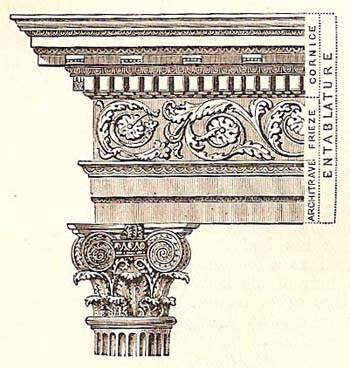frieze

An example of composite entablature.
The frieze is the middle division of an entablature, between the top of the architrave and the bed of the cornice. In the Doric style it is ornamented with triglyphs or slight projections, divided by angular grooves into three parts. The spaces between the triglyphs (called metopes) are square, and are either plain or enriched, either with figure-sculpture, as in the Parthenon, or with bulls' heads, paterae, or other ornaments. In the other styles the frieze is never cut into portions, but is either left plain or ornamented with figure-sculpture or scroll-work. The former is most usual in Greek art, the latter in Roman. In late Roman works the frieze is sometimes swelled or made to project with a curve.
